
|
Getting your Trinity Audio player ready...
|
Austria’s far-right Freedom Party (FPO) achieved a historic victory in Styria’s state election on Sunday, marking the first time it has claimed leadership in the region. This significant win follows the party’s strong performance in September’s general election and underscores its growing influence amid ongoing national coalition negotiations.
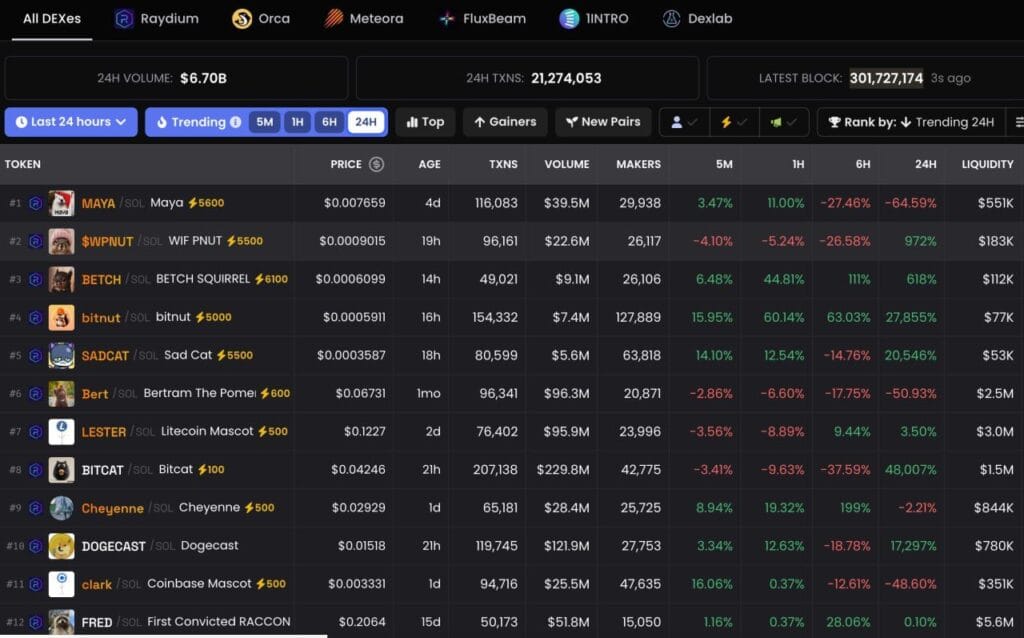
Styria, home to Graz—Austria’s second-largest city—holds limited immediate national sway. However, this outcome adds pressure on political leaders striving to establish the nation’s first three-way coalition government since 1949.
This is only the second state the FPO has ever won. The first was Carinthia, previously a stronghold of the party under Joerg Haider during his leadership in the late 1990s and early 2000s.
“There’s been a landslide in Styria. I didn’t expect such a resounding result,” said Stefan Hermann, the FPO’s deputy leader in Styria, during an interview with national broadcaster ORF.

According to a projection by pollster Foresight for ORF and APA, the FPO is leading with 35.3% of the vote, followed by the conservative People’s Party (OVP) at 26.6%. The estimate, which is based on 70% of votes counted, has a margin of error of 1 percentage point.
For the first time since World War II, neither the OVP nor the Social Democrats (SPO) have emerged victorious in Styria. This marks a dramatic shift in the political landscape of the state, famously known as the birthplace of actor Arnold Schwarzenegger.

Despite its success, the FPO will need to form a coalition to secure a majority in Styria’s state assembly and establish a governing administration. Unlike national elections, where the president decides who is tasked with forming a government, Styria’s rules automatically grant the leading party—now the FPO—the opportunity to set up a state government.
This victory reinforces the FPO’s growing foothold in Austrian politics, signalling a changing tide as the country navigates complex coalition talks at the federal level.
“There’s been a landslide in Styria. I didn’t expect such a resounding result.”
— Stefan Hermann, Deputy Leader of the Freedom Party in Styria
- 1. Countries Where You Can Study Completely Free
Even for non-EU students (including Africans), these countries offer free education at public universities.
🇩🇪 Germany
✅ Free tuition at most public universities
✅ Pay only semester fee: €150–€350
✅ Courses in English & German
✅ Strong engineering, IT, medicine, business, etc.Requirements:
- Proof of funds (usually around €11,200 blocked account)
- IELTS or test of English
- For English courses: very competitive
🇫🇮 Finland – Free through scholarships
❗ Tuition is not free for non-EU, but:
✅ Many universities offer full tuition scholarships
✅ Scholarships can also include monthly allowance
✅ English-taught programs are many
🇳🇴 Norway
✅ Tuition is 100% free for all students
✅ Pay only semester fee: €60–€120
✅ High-quality educationDownside:
- Cost of living is high (€1,100–€1,300 per month)
- English programs mostly at master’s level
🇮🇸 Iceland
✅ Tuition-free public universities
✅ Only registration fee: €600 per year
✅ 2. Countries With Very Low Tuition Fees
These countries are not free, but tuition is very low compared to the UK/US.
🇦🇹 Austria
✅ Public universities charge around €750 per semester for non-EU
✅ EU/EEA pay nearly nothing
✅ Many English-taught programs
✅ Friendly immigration and work rules
✅ Austria is one of the easiest for visa + job after studies
🇫🇷 France
✅ Public universities:
- €2,770 per year (Bachelor)
- €3,770 per year (Master)
✅ Government can give 50–100% fee waivers
✅ Scholarships like Eiffel can cover everything
🇵🇱 Poland
✅ Tuition as low as €1,500 – €3,000 per year
✅ Cheap living costs
✅ Many courses in English
✅ Easy admission process
🇨🇿 Czech Republic
✅ Study free if you take the program in Czech language
✅ English programs cost €3,000–€6,000 per year
✅ Very cheap living costs
🇵🇹 Portugal
✅ Tuition: €1,000–€1,500 per year
✅ Affordable lifestyle
✅ English programs available
✅ 3. Countries Offering Full Scholarships (Fully funded)
🇸🇪 Sweden
- Swedish Institute Scholarship
- Fully funded + monthly stipend
🇩🇰 Denmark
- Government scholarships via the universities
- Covers tuition + living allowance
🇳🇱 Netherlands
- Holland Scholarship
- Fully funded opportunities through universities
🇧🇪 Belgium
- ARES Scholarship (Fully funded)
✅ 4. Cheapest Countries for African Students (Overall Ranking)
✅ Free tuition:
- Germany
- Norway
- Iceland
✅ Low tuition:
- Austria
- France
- Poland
✅ Best scholarships:
- Sweden
- Denmark
- Belgium
✅ 5. What Are You Looking For?
✅ What level do you want to study?
- Bachelor
- Master
- PhD
- Study in Europe for free (or low tuition fees)
Europe offers plenty of affordable study options for international students. In many countries, education is free for European students. And there are even some places where non-European students can study for free.
Read on and find out where you can study on the cheap – even if you do not receive a scholarship or a bank loan.
Overview: Where can you attend university for free?
With very few exceptions, these are the countries in Europe that offer free tuition at their public universities:
Country Tuition fee for students from EU/EEA (per year) Tuition fee for students from other countries (per year) Austria free ca. 1,500 EUR Cyprus free for Bachelors; ca. 4,100 to 10,250 EUR for Masters ca. 3,500 – 10,000 EUR Denmark free 60,000 – 135,000 DKK
(8,000 – 18,000 EUR)Finland free 6,000 – 20,000 EUR France almost free, 250 – 600 EUR 2,900 – 3,900 EUR Germany free at public universities free at (most) public universities Greece free ca. 1,500 EUR Norway free 15,000 – 34,000 EUR Poland free, limited amount of degrees 2,000 – 8,000 EUR Slovenia free ca. 5,000 EUR Sweden free 80,000 – 200,000 SEK
(7,300 – 18,000 EUR)Austria
- Tuition-free for students from the EU/EEA
- Tuition fees around 1,500 EUR per year for students from other countries
Tuition at public universities is free for Europeans that want to study in Austria. Non-Europeans are charged a still very affordable 1,500 euros per year.
Cyprus
- Tuition fees for EU/EEA students: Bachelors tuition-free, Masters ca. 4,100 to 10,250 EUR per year
- Tuition fees for non-EU/EEA students: Bachelors ca. around 3,500 to 7,000 EUR per year, Masters ca. 10,000 EUR
This island in the Mediterranean is becoming a popular choice among international students seeking quality education, a wide variety of English-taught degrees, and a welcoming atmosphere.
Denmark
- Tuition-free for students from the EU/EEA
- Tuition fees around 60,000 – 135,000 DKK per year (8,000 – 18,000 EUR) for students from other countries
Denmark is a popular country for European students because it offers free tuition at high standards. Non-European international students pay up to 18,000 euros per year. Read more about tuition fees in Denmark.
Finland
- Tuition-free for students from the EU/EEA
- Tuition fees around 6,000 – 20,000 EUR per year for students from other countries
Since summer 2017, universities in Finland have been charging tuition fees to non-European students. The costs are set by the universities and range between 6,000 and 20,000 euros per year. Citizens from the European Union and EEA continue to study for free in Finland. Read more about tuition fees in Finland.
France
- Almost tuition-free for students from the EU/EEA
- Tuition fees around 2,900 – 3,900 EUR per year for students from other countries
With world-class education, and more and more Bachelor and Master programmes offered in English, France attracts a large number of international students every year. Aside from a negligible registration fee, most public universities in France charge between 250 and 600 EUR per year to Europeans. Internationals pay also relatively modest annual fees of ca. 2,900 EUR for Bachelors and 3,900 EUR for Masters. Vive la France! Read more: Details about tuition fees in France.
Germany
- Tuition-free for students from the EU/EEA
- Tuition-free for students from other countries (Except in the state of Baden-Württemberg)
Germany is one of the most popular countries for international students. With the exception of a few private universities, you can study in Germany for free – regardless if you are from Europe or elsewhere. There is usually a small administrative semester fee, but in many places this also covers a public transport ticket at the fraction of its usual price.
Since 2017, non-EU/EEA students pay 1,500 EUR per semester for their tuition fees at public universities in the state of Baden-Württemberg. That includes universities in Stuttgart, Karlsruhe, Mannheim, Freiburg, Heidelberg, etc. Since 2023, public universities in the state of Bavaria can also charge fees from non-EU/EEA students, but most choose not to do so.
Greece
- Tuition-free for students from the EU/EEA
- Tuition fees around 1,500 EUR per year for students from other countries
One of the sunnier places, Greece offers free education to all Europeans. And the cost for international students also low, at around 1,500 EUR per year. Combined with relatively low cost of living, Greece is among the more affordable study abroad destinations.
Norway
- Tuition-free for students from the EU/EEA
- Tuition fees between 15,000 and 34,000 EUR per year for students from other countries
Universities in Norway offer free education to students who are citizens of the EU/EEA. Since 2023, students from other countries have to pay comparably high tuition fees of roughly between €15,000 and €34,000 per year depending on university and programme. On top of that, Norway is one of the most expensive countries in the world. So make sure to compare not just the fees, but also the living expenses to other countries you are considering. Even if you have to pay fees elsewhere, it might still be cheaper overall than Norway.
Poland
- Tuition-free for students from the EU/EEA, limited amount of degrees
- Tuition fees between 2,000 to 8,000 EUR per year for students from other countries
Poland is a very affordable country for students. Can EU/EEA citizens study in Poland for free? Yes, there are a few tuition-free programmes available in English, however you must take into account that at public universities most of the degrees will be taught in Polish. So the short answer is: Yes! Long one: That depends. Read more here.
Slovenia
- Tuition-free for students from the EU/EEA, citizens of Bosnia and Herzegovina, Montenegro, Kosovo, the Republics of Macedonia and Serbia.
- Tuition fees around 5,000 EUR per year for students from other countries
Slovenia is among the less-explored study abroad destinations. Most universities offer free tuition for Europeans and a few additional countries from the Balkans, while for other international students it can cost around 5,000 EUR per year.
Sweden
- Tuition-free for students from the EU/EEA
- Tuition fees around 80,000 – 200,000 SEK per year (7,500 – 18,000 EUR)
Europeans can study in Sweden for free. Other international students should expect hefty fees when studying in Sweden, combined with relatively high cost of living.
- Elon Musk Wins Approval for $1 Trillion Tesla Pay Package
Tesla shareholders have given the green light to a record-breaking pay deal for CEO Elon Musk, potentially worth nearly $1 trillion, following a resounding 75% approval vote at the company’s annual meeting in Austin, Texas.
The monumental package, which drew cheers from investors in attendance, ties Musk’s compensation entirely to performance over the next decade. To earn the full reward, he must hit ambitious milestones — from scaling Tesla’s market value to $8.5 trillion to delivering 20 million electric vehicles and deploying a million robotaxis.
Musk, already the world’s richest man, won’t receive a salary under the new agreement. Instead, his payout could total over 400 million Tesla shares — but only if the company reaches its lofty goals.
After the vote, a jubilant Musk danced on stage to chants of his name, declaring,
> “This isn’t just a new chapter for Tesla — it’s a whole new book.”
He praised the energy of the gathering, joking that “other shareholder meetings are snoozefests, but ours are bangers.”
Danchimatv podcast
Ambitious Goals and Rising AI Aspirations
Musk’s immediate focus appears to be on Optimus, Tesla’s humanoid robot project. Initially unveiled in 2022, Optimus is designed to take on “unsafe or repetitive tasks” using the same AI technology that powers Tesla’s self-driving vehicles. Musk envisions the robot becoming central to Tesla’s factories — and eventually, to homes worldwide.
Analysts, however, have expressed mixed feelings.> “Let it sink in where Musk’s head is at,” noted Gene Munster of Deepwater Asset Management. “His ‘new book’ starts with Optimus — not cars.”
Musk later mentioned Tesla’s Full Self-Driving (FSD) feature, claiming the company was “almost comfortable” letting drivers “text and drive essentially.” The statement comes amid ongoing U.S. regulatory probes into Tesla’s self-driving software after several crashes.
Shareholder Reactions and Industry Debate
Tesla’s stock climbed slightly after the announcement and has surged over 60% in the past six months. Still, not all investors are convinced.
Ross Gerber, CEO of Gerber Kawasaki, described the approval as “another unbelievable chapter in business,” but warned that Musk’s divisive persona has hurt Tesla’s image..
> “Elon seems divorced from reality when it comes to how low his public approval has fallen,” he said.Some major institutional investors, including Norway’s sovereign wealth fund and CalPERS, opposed the deal, arguing it gives Musk excessive control. The outcome relied heavily on Tesla’s large base of small, retail shareholders — many of whom remain loyal to Musk’s vision.
Legal Challenges and the Road Ahead
This latest package follows a previous multi-billion-dollar pay deal struck down by a Delaware court earlier this year over concerns that Tesla’s board was too close to Musk. In response, the company relocated its incorporation to Texas, where this new agreement was approved.
Ann Lipton, a corporate law professor at the University of Colorado, said the plan mirrors Musk’s 2018 compensation — one he achieved ahead of schedule — but warned it places no limits on his external ventures or political involvement.
Despite controversy, analysts like Dan Ives of Wedbush Securities remain optimistic.
> “Musk is Tesla’s greatest asset,” Ives wrote, predicting that Tesla’s future valuation will be increasingly driven by artificial intelligence innovation.
As Tesla pushes into robotics and autonomous systems, one thing remains certain: Elon Musk continues to shape — and polarize — the future of technology, business, and leadership.
- US and China Agree to a One-Year Pause on Tariffs Amid AI and Trade Tensions
In what could mark a temporary easing of global trade tensions, former U.S. President Donald Trump and Chinese leader Xi Jinping have agreed to a one-year suspension of punitive tariffs that have defined the long-running trade war between Washington and Beijing.
The two leaders met face-to-face in Busan, South Korea, where discussions centered on two of the world’s most strategic resources — rare earth metals and AI semiconductors.Trump, who had recently threatened to slap 100 percent tariffs on Chinese imports, agreed to scale those duties back by 10 percent after Beijing reportedly promised to pause new export restrictions on rare earth materials for 12 months. China dominates the global supply chain for these critical minerals, which are vital to manufacturing everything from smartphones and electric vehicles to fighter jets and missiles.
According to The New York Times, the two leaders also discussed semiconductors, with Trump suggesting he might consider allowing NVIDIA to resume AI chip exports to China. The American chipmaker’s H20 processors had been reinstated for sale earlier this year, though China’s government instructed its major tech companies to halt purchases pending a national security review.

Putin -trump’s meeting However, NVIDIA’s Blackwell chips — its most powerful AI hardware currently in development — were notably absent from the discussion, possibly signaling China’s shifting strategic interest away from older architectures like the H20.
Meanwhile, TikTok’s uncertain future in the U.S. remains unresolved. The Trump administration has hinted at a deal granting the U.S. majority ownership of the app’s American operations, but as of now, no final agreement has been reached.
This temporary truce may cool tensions between the world’s two largest economies — but with both nations vying for dominance in AI technology, critical minerals, and digital influence, the peace could prove fragile.
- OpenAI’s Atlas Browser: A Bold Leap That’s Still Learning to Walk
OpenAI has once again stepped into uncharted digital territory with the launch of Atlas, its first-ever web browser — one designed to merge artificial intelligence with the way we surf the internet. But early reactions from experts suggest that while the concept is revolutionary, the execution still feels raw and unrefined.Released on Tuesday evening, Atlas aims to compete directly with Google Chrome, potentially disrupting the most profitable arm of Google’s parent company, Alphabet. The browser fully integrates ChatGPT, allowing it to follow users as they browse, summarize pages, and even interact with websites autonomously.
A Great Idea That’s Not Quite ReadyOne of Atlas’s standout features is its AI agent mode — an experimental system that lets users assign tasks to ChatGPT, which then takes control of the browser to perform them automatically. In theory, it’s a glimpse into a future where the web runs on instruction rather than clicks.
But for some early testers, the experience was underwhelming.
> “To put it bluntly, it felt at times like watching a 12-year-old use my computer,” said Dr Junade Ali, a fellow at the Institution of Engineering and Technology (IET).Dr Andrea Barbon of the University of St. Gallen echoed that sentiment after testing the agent mode. “It starts clicking around, trying to complete your request, but on complex websites it just gets lost,” he said. After a few minutes, he gave up and closed the browser.
> “Maybe I’ll use it in the future — if they release versions that actually work,” he added.
OpenAI Admits It’s Still Early Days
In a statement, OpenAI described the agent mode as an “early experience” that is still being refined. The company said it is working rapidly to improve reliability, latency, and complex task success, acknowledging that current versions may “make mistakes on complex workflows.”
Even so, Dr Junade Ali believes the foundation is promising. “It’s definitely primitive, but it’s a neat concept,” he said.
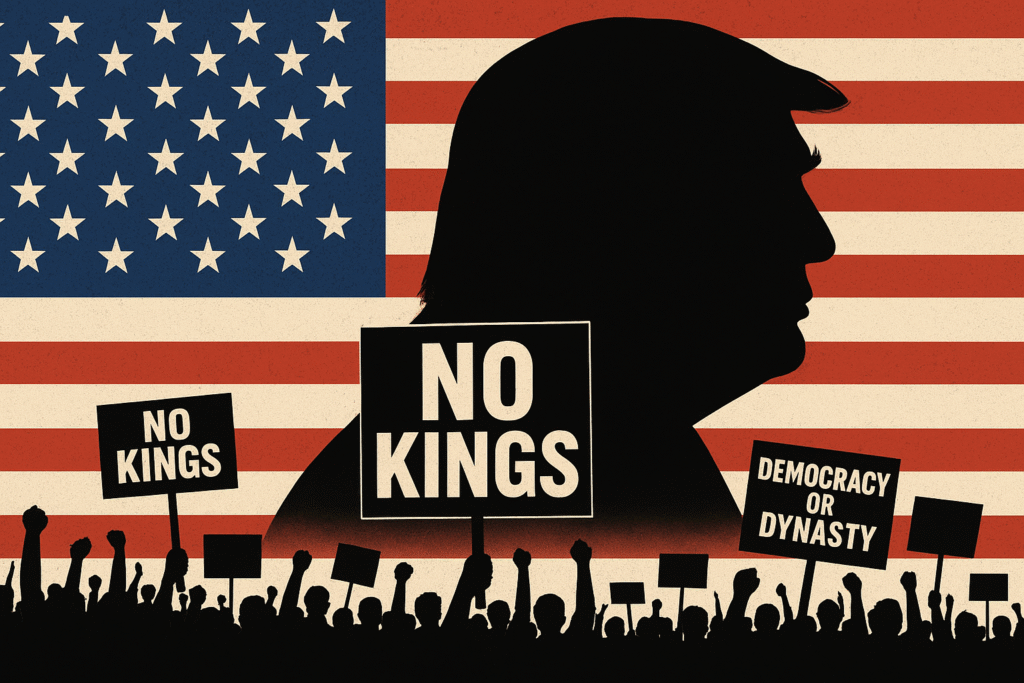
The Bigger Picture: A Threat to Google?
Despite Atlas’s rough start, OpenAI’s presence in the browser market could pose a serious challenge to Google. ChatGPT has already diverted a large portion of search traffic away from Google, cutting into ad revenue that once seemed untouchable.“OpenAI has already made a massive dent in Google’s business model,” Dr Ali explained. “And Google is struggling to keep up.”
Dr Barbon predicts that Google will respond swiftly. “It depends on who moves faster — OpenAI or Google. But right now, OpenAI isn’t there yet.”
A New Internet Paradigm
When Google launched in 1998, it reshaped the web by making information accessible in seconds. OpenAI’s Atlas is betting that artificial intelligence can take us even further — from the “attention economy” to what experts are now calling the “answer economy.”
Dr Luke Roberts from the University of Cambridge sees this as a major societal shift. “People don’t want to search anymore — they just want answers,” he said. But with that comes a risk: as AI answers become faster and easier to access, users may stop questioning where those answers come from.“We don’t necessarily scrutinize the information we’re given,” Dr Roberts warned. “We just accept it at face value. That’s the shift society must reckon with.”
The Bottom Line
OpenAI’s Atlas may not yet be ready to replace Chrome, but it signals a future where browsers aren’t just tools for navigation — they’re intelligent assistants that think, act, and learn. The technology is still rough, but the direction is clear: AI is no longer just a search bar — it’s becoming the web itself.




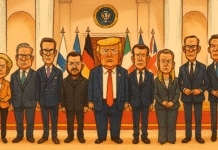
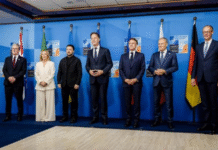
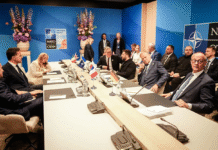
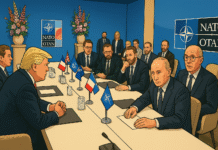
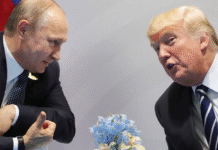
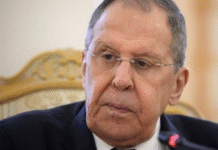


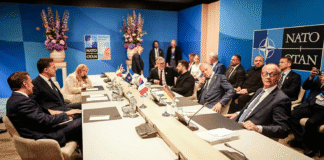





Bwer Company is a top supplier of weighbridge truck scales in Iraq, providing a complete range of solutions for accurate vehicle load measurement. Their services cover every aspect of truck scales, from truck scale installation and maintenance to calibration and repair. Bwer Company offers commercial truck scales, industrial truck scales, and axle weighbridge systems, tailored to meet the demands of heavy-duty applications. Bwer Company’s electronic truck scales and digital truck scales incorporate advanced technology, ensuring precise and reliable measurements. Their heavy-duty truck scales are engineered for rugged environments, making them suitable for industries such as logistics, agriculture, and construction. Whether you’re looking for truck scales for sale, rental, or lease, Bwer Company provides flexible options to match your needs, including truck scale parts, accessories, and software for enhanced performance. As trusted truck scale manufacturers, Bwer Company offers certified truck scale calibration services, ensuring compliance with industry standards. Their services include truck scale inspection, certification, and repair services, supporting the long-term reliability of your truck scale systems. With a team of experts, Bwer Company ensures seamless truck scale installation and maintenance, keeping your operations running smoothly. For more information on truck scale prices, installation costs, or to learn about their range of weighbridge truck scales and other products, visit Bwer Company’s website at bwerpipes.com.